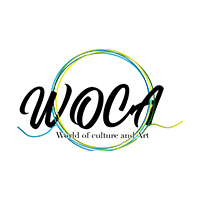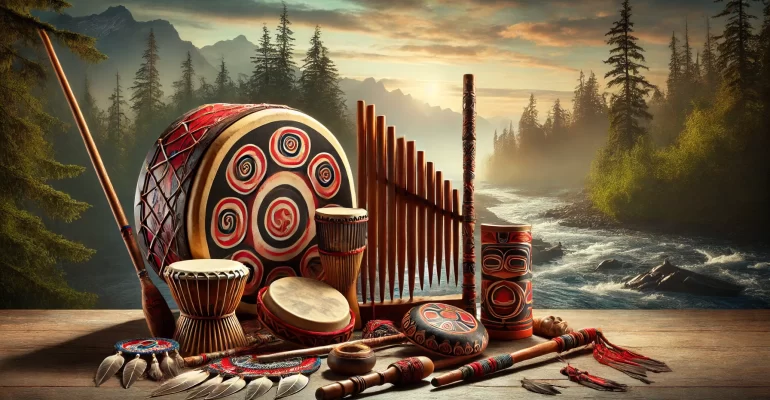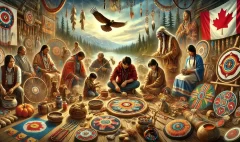Sounds of the Land: Traditional Indigenous Instruments in Canada
Sounds of the Land: Traditional Indigenous Instruments in Canada
Hey there, music lovers and curious minds! Are you ready to go on an amazing sound journey? Today, we’re going to explore the wonderful world of traditional instruments used by Indigenous Peoples in Canada. These aren’t just any instruments – they’re like magical sound-makers that tell stories, heal spirits, and connect people to the land. So, let’s tune up our ears and dive into this musical adventure!
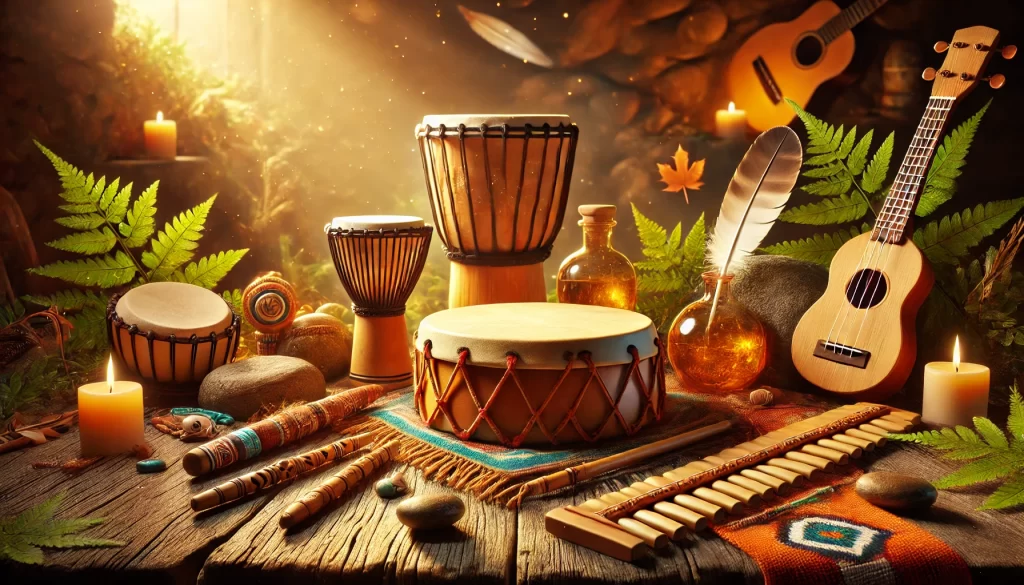
What Are Traditional Indigenous Instruments?
Before we start our tour of different instruments, let’s talk about what makes an instrument “traditional” and “Indigenous.”
Traditional Indigenous instruments are music-makers that have been used by Indigenous Peoples for a very long time – sometimes for thousands of years! They’re special because:
- They’re often made from materials found in nature, like wood, animal skins, or bones.
- Many have spiritual meanings and are used in ceremonies.
- They help tell stories and pass down knowledge from older to younger people.
- Each instrument has its own personality and sound, just like people do!
“Our instruments are like old friends,” says Elder Mary Songkeeper. “They’ve been with us through good times and hard times, always ready to share our stories and feelings.” Now, let’s meet some of these amazing instruments!
Drums: The Heartbeat of the Earth
Drums are super important in Indigenous cultures. They’re not just for making music – they’re like the heartbeat of Mother Earth!
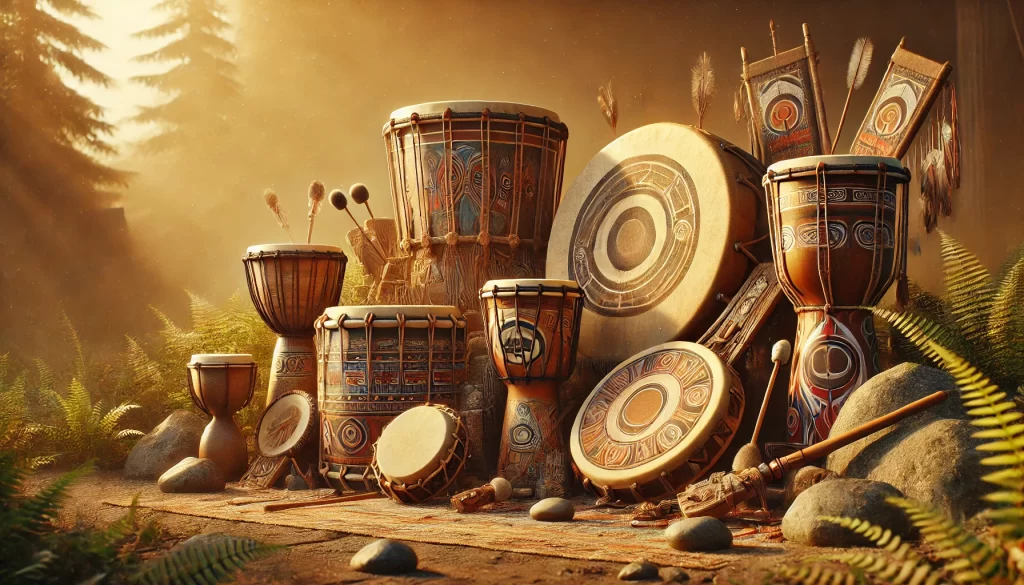
Types of Drums
There are different kinds of drums used by Indigenous Peoples in Canada:
- Big Drums: These are large drums played by several people at once. They’re often used in Pow Wows and big ceremonies.
- Hand Drums: These are smaller drums that one person can hold and play. They’re great for more personal songs or smaller gatherings.
- Water Drums: These special drums have water inside them, which makes a unique, bubbly sound.
- Frame Drums: These are flat drums with a wide wooden frame. They’re used by many Indigenous groups across Canada.
How Drums Are Made?
Making a drum is a really special process. Here’s how it usually goes:
- First, a wooden frame or hollow log is chosen.
- Then, an animal hide (like deer or elk) is stretched over the frame.
- The hide is left to dry, which makes it tight and gives the drum its sound.
- Sometimes, the drum is painted with special designs or symbols.
“When we make a drum, we’re not just creating an instrument,” explains drum-maker Tom Thundervoice. “We’re bringing a new voice into the world, one that will help carry our songs and prayers.”
Flutes: Whispers of the Wind
Flutes are beautiful instruments that make soft, gentle sounds. Many Indigenous Peoples say flutes sound like the wind whispering through trees.
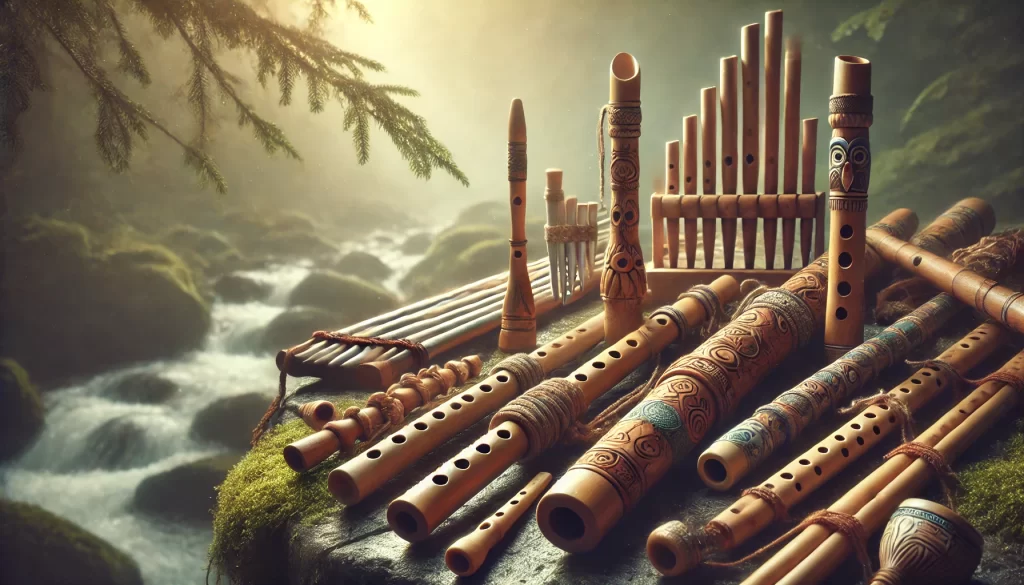
Types of Flutes
There are different kinds of flutes used by Indigenous Peoples in Canada:
- Wooden Flutes: Often made from cedar or other soft woods. They can have different numbers of holes for playing different notes.
- Bone Flutes: Sometimes made from eagle or other bird bones. These are often used for special ceremonies.
- Whistles: These are like small flutes that make high-pitched sounds. They’re sometimes used to imitate bird calls.
How Flutes Are Made?
Making a flute takes a lot of skill and patience. Here’s a simple version of how it’s done:
- A straight piece of wood or bone is chosen.
- The inside is hollowed out to create the flute’s body.
- Holes are carefully carved into the flute for different notes.
- A special cut is made at one end to create the sound when you blow into it.
“Each flute has its own spirit,” says flute-maker Lisa Windwhisper. “When you play it, you’re not just making music – you’re letting that spirit sing.”
Rattles: Shakers of Spirit
Rattles are fun instruments that make shaking, rattling sounds. They’re used in many ceremonies and are great for keeping the beat in songs.
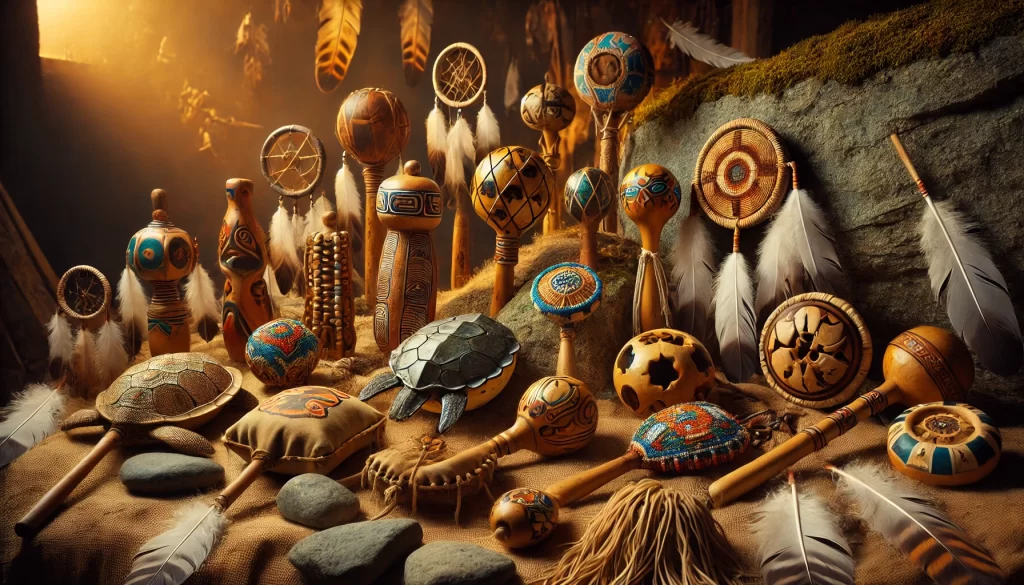
Types of Rattles
Indigenous Peoples in Canada use lots of different kinds of rattles:
- Gourd Rattles: Made from dried gourds filled with small stones or seeds.
- Turtle Shell Rattles: Using the shell of a turtle, filled with small pebbles.
- Deer Hoof Rattles: Made from deer hooves strung together.
- Birchbark Rattles: Created from rolled birchbark and filled with small stones.
How Rattles Are Made?
Making a rattle can be simple or complex, depending on the type. Here’s a basic idea:
- Choose a container (like a gourd or turtle shell).
- Clean and dry it thoroughly.
- Fill it with small objects like pebbles or seeds.
- Seal it up and attach a handle.
- Sometimes, rattles are decorated with paint, feathers, or beads.
“Rattles are like little containers of joy,” laughs Elder John Shakemaker. “When you shake them, you’re spreading that happiness all around!”
String Instruments: Newcomers with Indigenous Flair
Some string instruments, like fiddles and banjos, weren’t originally from Indigenous cultures. But over time, many Indigenous Peoples have made these instruments their own, creating unique styles of playing them.
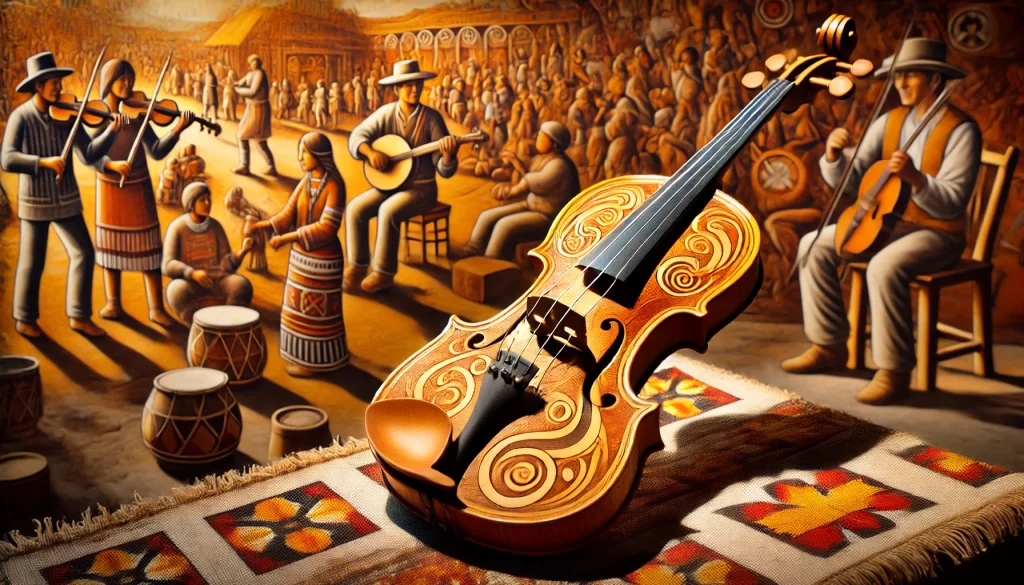
Fiddles
Fiddles (which are like violins) became popular with some Indigenous groups, especially the Métis people.
– Métis fiddling has its own special style, with fast foot-tapping tunes.
– Fiddles are often used for dancing and community gatherings.
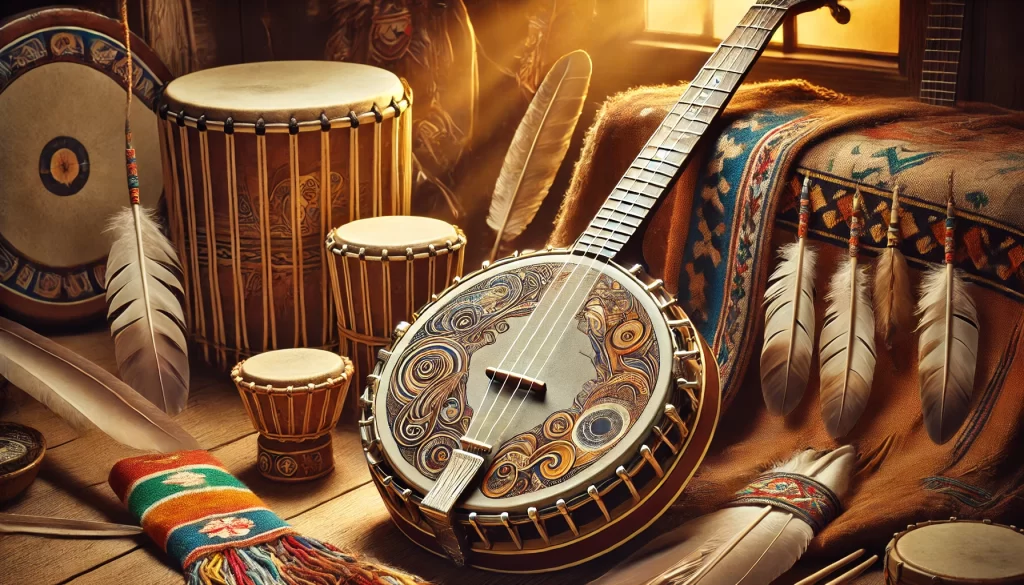
Banjos
Some Indigenous groups, particularly in eastern Canada, have adopted the banjo into their music.
– The banjo’s sound fits well with traditional drumming and singing.
– Indigenous banjo players often create unique tunings and playing styles.
“We’ve taken these instruments and given them our own voice,” explains Métis fiddler Sarah Bowdancer. “When I play my fiddle, I’m connecting with my ancestors and my culture in a new way.”
Other Cool Instruments
Indigenous Peoples in Canada have many other awesome instruments too! Here are a few more:
- Bull Roarers: A flat piece of wood attached to a string. When you swing it around, it makes a cool roaring sound.
- Birchbark Horns: Like nature’s megaphones! They’re used to make loud, carrying sounds.
- Rainsticks: Long hollow tubes filled with small pebbles. When you turn them over, they sound like gentle rain.
- Nose Flutes: Yep, flutes you play with your nose! They’re used by some Indigenous groups in Canada.
The Spirit of the Traditional Indigenous Instruments
In many Indigenous cultures, instruments aren’t just things – they have their own spirits and personalities.
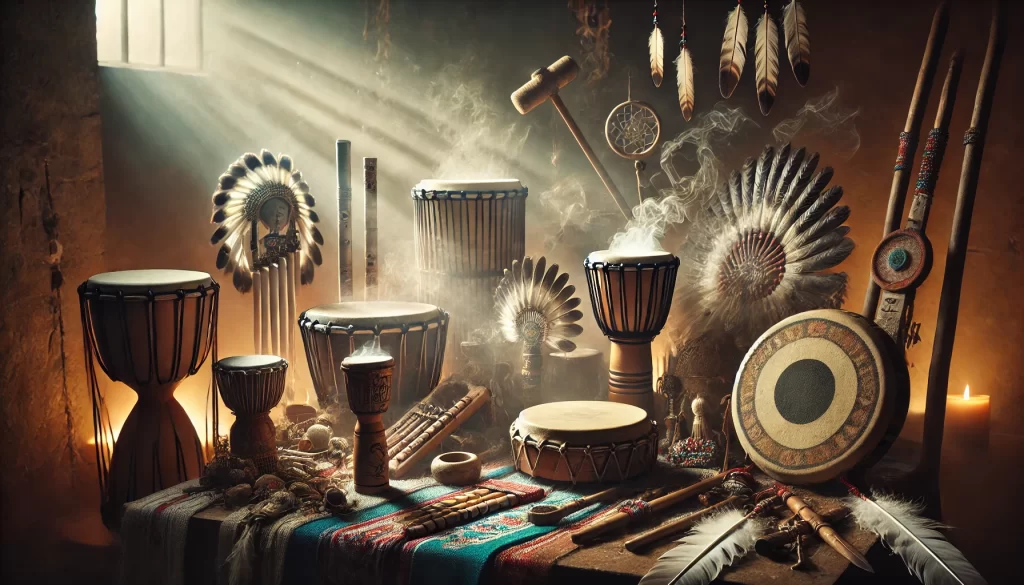
– People often give their instruments as much respect as they would a person.
– Some instruments are used only for special ceremonies.
– Many people believe that instruments choose their players, not the other way around!
“Our instruments are our partners in making music,” says drummer Mary Rhythmkeeper. “We take care of them, and they take care of us by sharing their beautiful sounds.”
Learning to Play Traditional Indigenous Instruments
If you’re interested in learning to play Indigenous instruments, that’s awesome! But it’s important to do it in a respectful way:
- Learn from Indigenous teachers when possible.
- Understand the cultural meaning behind the instruments and music.
- Don’t use sacred instruments or songs without permission.
- Appreciate the music without trying to copy ceremonial or sacred songs.
Many Indigenous communities offer workshops or classes where you can learn about their musical traditions in a good way.
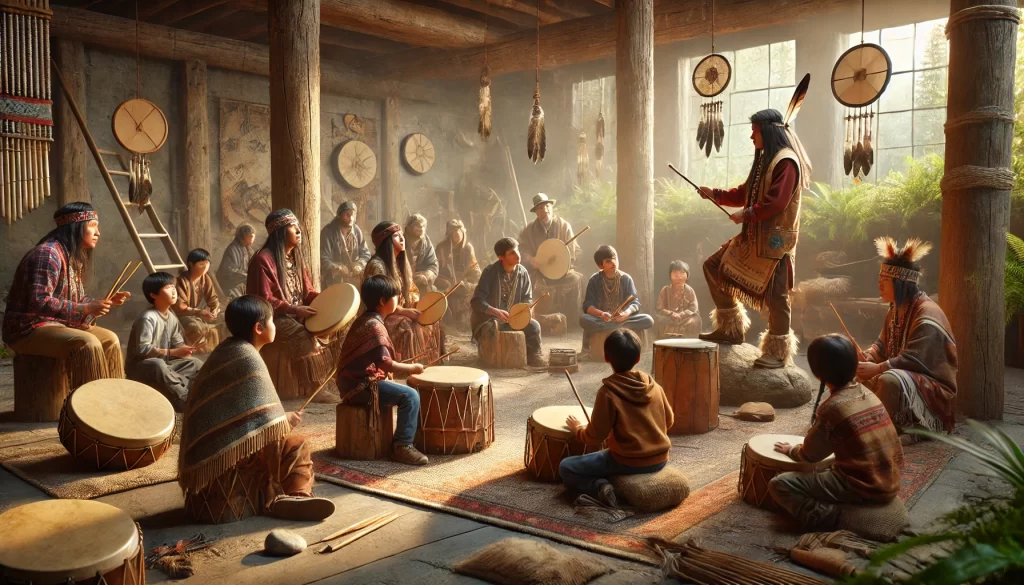
Keeping the Music Alive With Traditional Indigenous Instruments
Indigenous Peoples are working hard to keep their musical traditions strong. Here’s how:
- Teaching young people to make and play traditional instruments.
- Recording elders playing traditional songs to preserve them.
- Creating new music that mixes traditional sounds with modern styles.
- Sharing their music at festivals and concerts for everyone to enjoy.
“Our music is like a living thing,” says young musician Tom Eaglesong. “As long as we keep playing, singing, and sharing, our cultural heartbeat will stay strong.”
Wrapping Up: A Symphony of Cultures
Indigenous instruments aren’t just for making music – they’re for telling stories, healing spirits, celebrating life, and keeping cultures strong. Each instrument has its own voice, its own spirit, and its own special role in Indigenous communities. The next time you hear an Indigenous drum, flute, or rattle, remember that you’re not just listening to a sound – you’re hearing the voice of the land, the whispers of ancestors, and the beating heart of living cultures.
So, what do you think? Which instrument sounds the coolest to you? Have you ever heard any of these instruments being played? Share your thoughts in the comments below. Let’s keep the conversation going and celebrate the amazing world of Indigenous music together!
